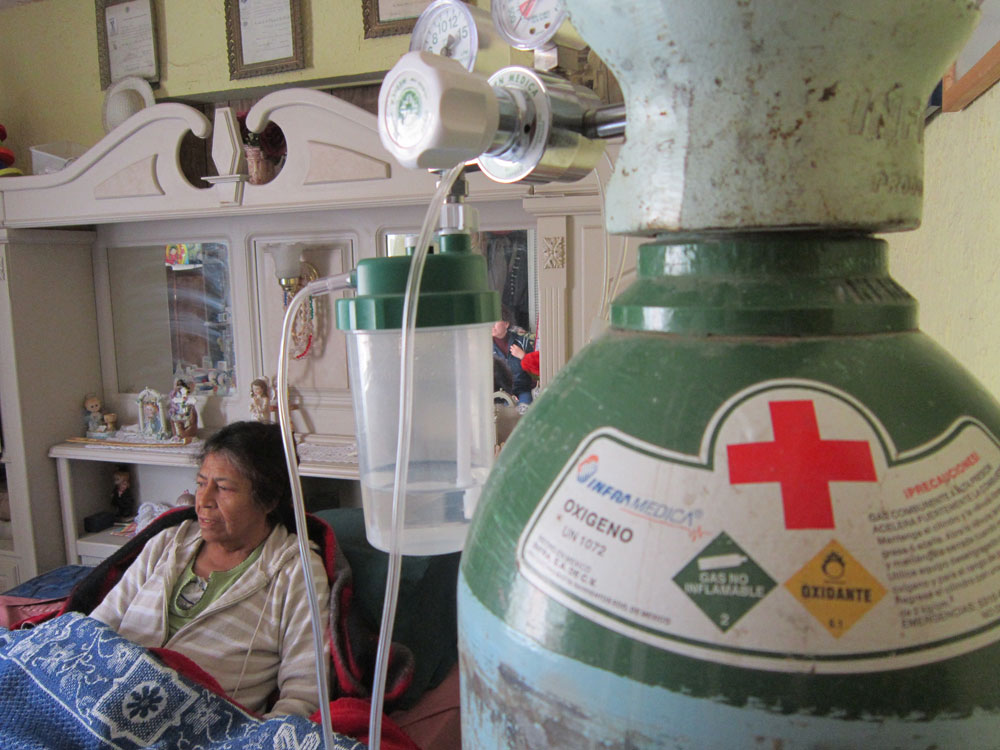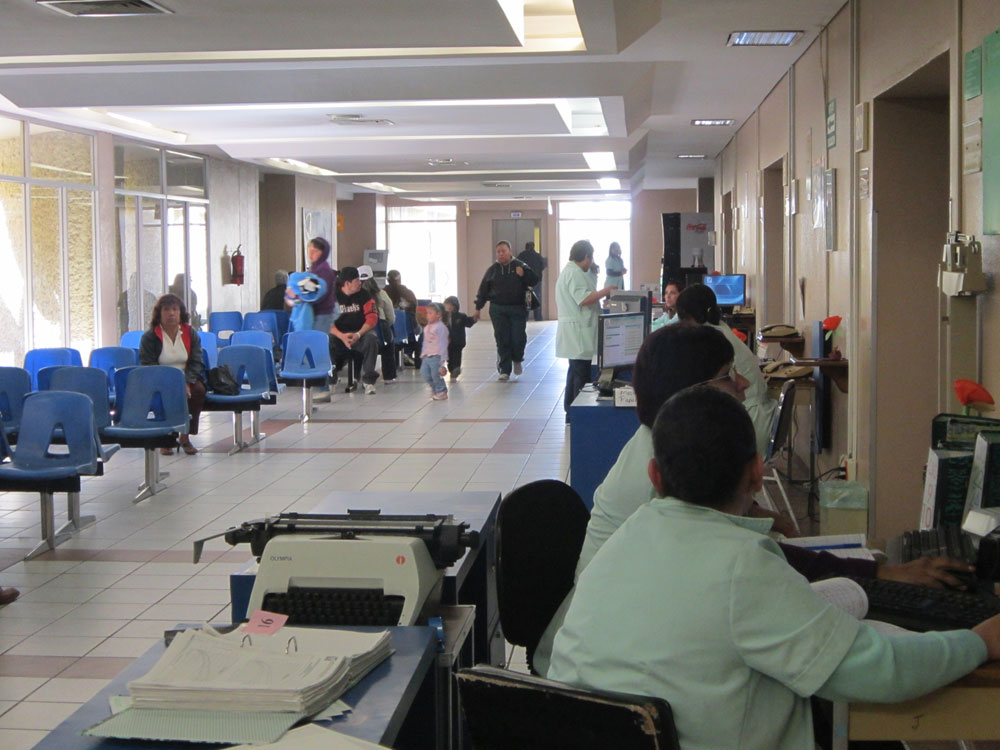CIUDAD JUÁREZ – After 20 years with diabetes, she lives her life in bed, watching her favorite soap operas on T.V., occasionally talking to her husband or asking for something she needs.
After suffering kidney failure four years ago Guadalupe Vargas, 62, needs peritoneal dialysis every four hours to clean her nonfunctioning kidneys. “My life is not the same anymore. I can’t do anything. Diabetes also affected my eyesight. I have glaucoma.”

Guadalupe Vargas, 62, a diabetes patient, lives her life in bed. (Idalí Cruz/Borderzine.com)
Vargas is not suffering alone. A survey entitled Diabetes Prevalence Study conducted by the U.S. Centers for Disease Control and Prevention and the Mexico Secretariat of Health showed that 1.11 million inhabitants of the border region suffer from diabetes – 40% of adults in the Mexican border states and 11.6% of adults in the U.S. border states.
Rodolfo Elias, an epidemiologist at clinic number 48 of the IMSS the Mexican Social Security Institute said that the two main diseases that are looked after in the clinic are hypertension or high blood pressure, and diabetes. “Approximately 10% of all the patients that are looked after in the clinic have diabetes.”
The greatest concern among health professionals is that the majority of patients with diabetes do not take the proper care to their health says Josefina Anguiano, a social worker at the clinic. “On a regular basis, there are very few patients that register in our program for diabetics and hypertension (SODI), and they are patients that have suffered from diabetes for over 10, 15 or even 20 years.”
Elias said that a huge percentage of diabetics do not take the proper care of their health. He said that the number of people with diabetes has increase. First of all because detection of the disease has improved, but also because of the culture and the harmful eating habits.
“Our culture must be preventive, but for many years we just heal whatever pain we’re feeling at the moment. Since this is a chronic disease that with time deteriorates the vital organs of the body, when the patients are having health complications they come to be checked,” Anguiano said.
Vargas has a history of diabetes in her family. Both her parents had it, but she never really took special care of her health when she was younger. “I never paid attention, I was not interested, my mother was the one who told me that I was going to get sick but I didn’t mind. I ate what I wanted, all the things that you shouldn’t eat. Besides, my father liked fried food a lot.”

“Approximately 10% of all the patients that are looked after in the clinic have diabetes,” said epidemiologist Rodolfo Elias. (Idalí Cruz/Borderzine.com)
Anguiano says that health professionals can only do so much. It is the responsibility of every patient, and they will suffer from diabetes as long as they don’t make their best effort to modify their eating habits. For example, they should stop eating candies, sugar, flour and, and not live a sedentary life. Otherwise, they won’t enjoy a life without health complications.
“What I would say to people who are at risk of getting diabetes is that they should get informed about what is bad for their health. Because they can eat what they want but with restrictions, to prevent all this that happened to me, because it is preventable,” Vargas said.



Great article about an important health topic that impacts many of us directly or indirectly. Cut down on the carbs, increase physical activity, so simple but personal eating and other behavioral habits are very difficult to change. You need to see the devasting effects of long time diabetes, not only renal failure as in this article, but amputations, blindness, and even sudden death with certain types of diabetes. what does it take to scare yourself into making a few changes in your daily life…? This desease is as deadly as AIDS… However, you don’t catch it from somebody else, it is self-induced.
un articulo muy interesante y bien escrito